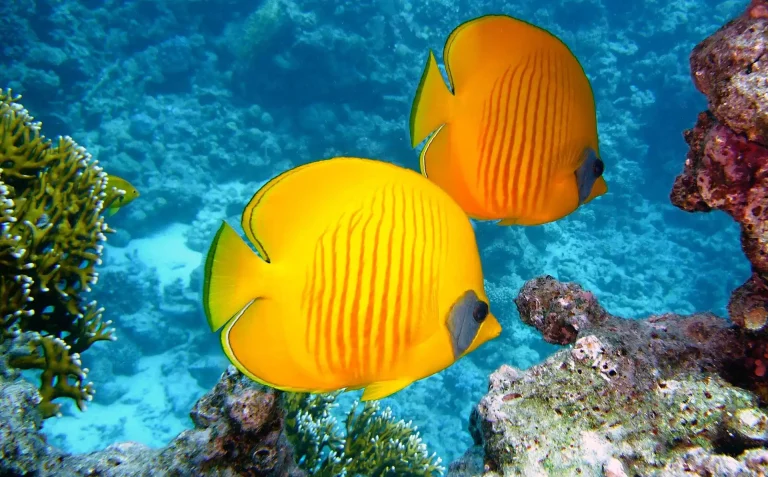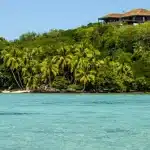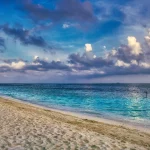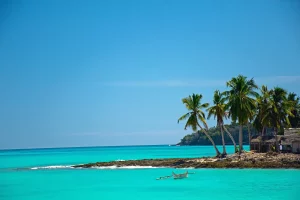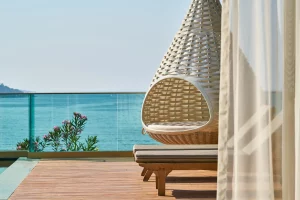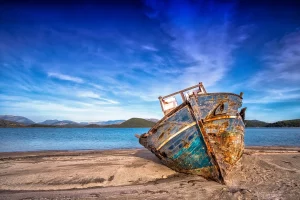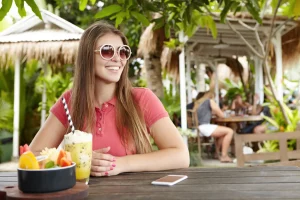Scuba diving Nosy Be attracts travelers seeking authentic underwater discoveries. Found in northwest Madagascar, Nosy Be stands out for its spectacular marine life, sandy beaches, and unique biodiversity. This guide explains what makes diving in Nosy Be special, details the best private villa-style accommodations, and highlights essential tips for an enjoyable and safe stay.
Nosy Be: A Leading Destination for Scuba Diving in Madagascar
Over the years, Nosy Be has become a key spot for scuba diving in the Indian Ocean. Its clear waters, warm tropical climate, and rich marine life appeal to divers of all levels.
Highlights of Nosy Be include:
- Well-preserved marine environments, relatively untouched by mass tourism
- Comfortable water temperatures year-round, between 26°C and 30°C
- Corals, colorful fish, turtles, and occasionally whale sharks and manta rays (depending on the season)
Whether you’re a beginner looking for gentle conditions, or an advanced diver seeking new thrill, Nosy Be offers an attractive and versatile diving scene.
The Top Diving Sites in Nosy Be
The scuba diving Nosy Be spots are varied, each with its distinct character. Some of the best-known include:
1. Tanikely
A small island and marine reserve, Tanikely is famous for crystal-clear waters, accessible coral reefs even at shallow depths, and rich fauna (clownfish, moray eels, starfish).
2. Nosy Sakatia
Known for calm snorkeling and diving, Sakatia hosts green turtles and lush coral gardens. Easy currents and excellent natural light make it perfect for all levels.
3. Mitsio Wreck
For explorers, this underwater wreck is a must. Marine life abounds here: it is one of the most remarkable dive locations in the area.
4. Outer Banks
A few kilometers offshore, these deeper sites are more technical. Expect to encounter barracuda, groupers, and sometimes large manta rays.
Other locations worth discovering:
- Nosy Iranja: crystal waters and great drift dives
- Ankify: close to the mainland, features mangroves and eco-friendly sites
- Around Nosy Komba and Nosy Fanihy: smaller islets with pristine environments
When to Dive in Nosy Be?
The dry season, from April to December, delivers the most stable conditions for scuba diving. Skies are clear, underwater visibility is excellent, and cyclone risk is low. Most divers prefer to visit from May to November, with September to December offering the best chance to see whale sharks.
Average temperatures:
- Air: 25°C to 32°C
- Water: 26°C to 30°C
A light wetsuit (3 mm) is generally sufficient for comfort.
Nosy Be’s Remarkable Marine Biodiversity
Nosy Be is renowned for its marine richness, offering excitement to both snorkelers and scuba divers.
You’ll regularly spot:
- Schools of tropical fish (surgeonfish, angelfish, butterflyfish)
- Peaceful marine turtles
- Shoals of barracuda and jackfish
- Colorful nudibranchs and tiny seahorses in protected zones
- Great pelagics (whale sharks and manta rays in the right season)
Coral reefs are also home to moray eels, stingrays, and sometimes dolphins. Many sites compete with the best Indian Ocean marine reserves for biodiversity.
Diving for All: Introductory, Advanced, and Exploration
Whether you want to start scuba diving in Nosy Be, take a first dive, or join training courses, the island offers options for all levels.
For beginners:
- Intro dives available from age 8–10 with professional supervision
- Shallow and safe dive sites with sandy bottoms and gentle reefs
- Quality rental gear and clear safety instructions
For advanced divers:
- Wreck and wall dives, exploration aspects
- Possibility to observe pelagic life offshore
- Advanced certification courses (PADI, CMAS, SSI, and more) available locally
Snorkeling: An Easy Alternative
If you prefer to stay on the surface, snorkeling in Nosy Be is rich and varied. Access is possible from many beaches or via quick boat trips. Shallow, clear waters reveal an abundance of fish and corals—even turtles—without scuba gear.
Tips:
- Bring your own mask, snorkel, and sun protection (UV shirt, reef-safe sunscreen)
- Respect protected areas, avoid touching wildlife or corals
- Snorkel with a guide when possible for safety and better discovery
Accommodation Suited for Scuba Divers at Nosy Be
After a long day at sea, comfortable accommodation is key for rest and planning your next dives. Staying in a private villa allows for privacy, relaxation, and tailored service.
Private Villas: A Perfect Option for Divers
Among island accommodations, villas (such as those at Andilana peninsula) offer:
- Quick access to diving centers
- Peaceful settings and beautiful sea views
- Air-conditioned bedrooms for a restful sleep after diving
- Wi-Fi to share your experiences or check dive forecasts
Villas or guest houses often feature private pools, wellness zones (jacuzzi, massage), and large terraces for unwinding.
Services to Make Divers’ Lives Easier
A personalized welcome, gear storage, daily housekeeping, and on-site dining simplify life for active guests. A private chef, for instance, can prepare healthy meals using fresh local produce.
Other convenient services often include:
- Transfers to the airport or port
- Booking of marine trips or full diving days
- Advice on the best sites according to your skills
Practical Tips for Organizing Your Scuba Diving Holiday in Nosy Be
To get the best from your scuba diving Nosy Be trip, consider the following:
Before you travel:
- Verify your diving certificates are up to date
- Consider taking out insurance covering diving activities
- Check local health requirements (vaccines, tests if needed)
Essentials to pack:
- Personal dive/snorkeling mask, snorkel, rash vest
- Ocean-friendly sunscreen to protect corals
- Waterproof camera for underwater memories
On site:
- Stay hydrated in the hot climate
- Respect local guidelines for marine life
- Adjust plans according to weather and instructor advice
Nature Activities in Nosy Be, Beyond Diving
While scuba diving is a highlight, Nosy Be has much more to offer in nature and culture. You can also:
For example:
- Enjoy forest hikes through ylang-ylang plantations and tropical vegetation
- Swim and relax on white sandy beaches (Andilana, Ambatoloaka)
- Take boat trips to smaller islands (Nosy Komba, Tanikely, Iranja)
- Observe lemurs, chameleons, and rare birds
- Unwind with traditional Malagasy massages after diving
In the evening, nothing beats a sunset on a private villa terrace overlooking the sea.
Protecting the Marine Environment: Responsible Diving
Preserving Nosy Be’s marine heritage is vital. Every visitor can act to protect these fragile ecosystems.
Diving guidelines:
- Don’t touch or collect corals, shells, or marine life
- Use only reef-safe sunscreens
- Bring all waste ashore, avoid plastics
- Prefer eco-friendly and conservation-minded dive centers
Some local initiatives include beach clean-ups and conservation programs. Participation in these efforts supports sustainable tourism.
Why Choose Nosy Be for Diving?
Selecting scuba diving Nosy Be means authenticity and tranquility. The destination’s main assets are:
- Exceptional biodiversity accessible from your first dive
- Varied options for families, groups, or solo travelers
- Warm hospitality and environmentally respectful facilities
- Private accommodation for living at your rhythm, close to the ocean
Nosy Be’s climate, crystal-clear waters, and outstanding sites make it one of the best diving experiences in the Indian Ocean.
Scuba diving Nosy Be is a must for anyone wishing to explore Madagascar’s underwater treasures, regardless of experience. Well-prepared, your stay combines wonder, comfort, and authentic connections with nature–all while ensuring the respectful protection of the local ecosystem. Use this guide to organize your perfect trip and unlock all dimensions of the island’s marine wonders.

